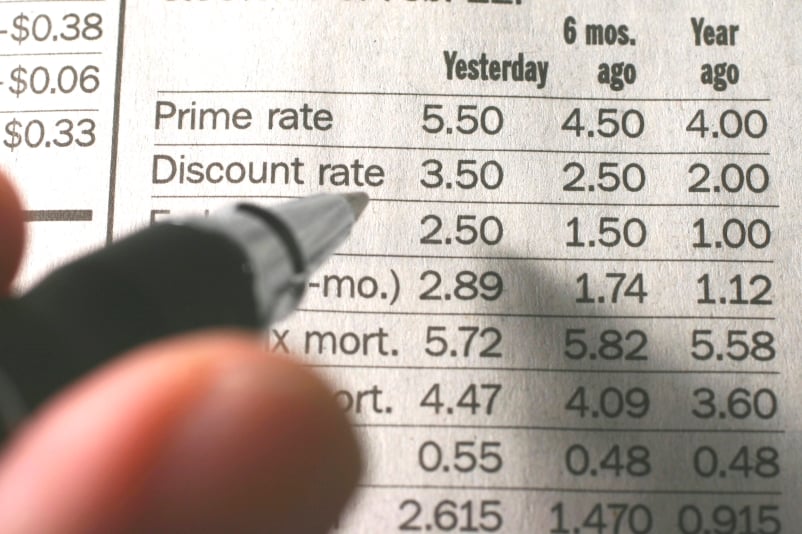The U.S. economy can currently be described as being in a "Goldilocks" scenario: The financial sector has healed, private debts have been reduced, and the recovery has firmed while receiving a boost from lower oil prices. Even as these lower oil prices support growth, they help keep inflationary pressures muted, thus allowing the Federal Reserve to maintain highly accommodative monetary conditions and very low interest rates.
We estimate that sometime in 2016-17, base effects on energy prices will be much less favorable and, combined with a tighter labor market and faster GDP growth, could result in
a meaningful acceleration in inflation pressures. Against this background, extraordinary monetary accommodation cannot be extended indefinitely, and as it unwinds, yields should rise. Any rise in inflation would only further escalate this adjustment.
The U.S. economic recovery is robust, indeed quite strong by most metrics. In January, the IMF revised its 2015 forecast for full-year U.S. GDP up to 3.6%, largely on the back of the positive impact from lower oil prices. U.S. growth should actually improve as the year progresses, with broad-based economic strengthening. While investment spending is likely to be weak in the first half of the year, reflecting a decline in oil-related spending, we would anticipate a pickup in the second half of the year. Furthermore, as oil prices remain low, households are increasingly likely to spend additional income.
Regarding U.S. labor conditions, the majority of labor market indicators have shown steady improvement. The unemployment rate decreased to 5.5% in March, significantly down from 6.7% at the end of 2013, while the participation rate remained steady. There are strong indications that the disappointing non-farm payrolls report for March largely reflects weather and other temporary factors, and thus does not change our view on the underlying strength of labor market conditions. Furthermore, despite a greater number of job openings now than in the pre-crisis period, the number of unemployed has remained at higher levels — indicating a skills mismatch. Thus, a structural component to unemployment exists, suggesting that wage pressures could materialize before the unemployment rate reaches previous lows.
Regarding inflation, headline measures have declined recently, particularly on softer energy prices, but underlying inflationary pressures have been much more stable, albeit still below the Fed's 2.0% inflation target. However, the declining slack in labor markets suggests improving aggregate income conditions. In turn, this would mean that companies could have stronger pricing power going forward, opening up the possibility of higher inflation. Thus, we believe markets have overstated the risks of deflation. With absolutely no inflation premium built into yields, it would only need the risk of inflation to cause a backup in rates.
(More insight: Michael Hasenstab on other ways investors should prepare for increased rates)
Looking forward, we expect the Fed to raise interest rates
in the second half of 2015 and only a relatively large shock would completely derail monetary policy normalization. Even a significant delay would further exacerbate the distortions that have been created in financial markets by the Fed's policy. As the Fed begins to unwind monetary accommodation, U.S. Treasury yields will likely eventually normalize back toward nominal yield levels closer to the rate of nominal GDP growth. Current U.S. GDP growth would be consistent with nominal yields closer to 4.0%.
Given that the era of historically low interest rates in the U.S. will likely come to an end later this year, it is important to actively position portfolios both to gain from rising U.S. Treasury yields and to hedge against global risks in the developed and emerging bond markets.
Increased negative exposure to U.S. Treasuries through interest-rate swaps further reduces duration exposure in a portfolio and increases negative correlations to U.S. Treasury returns. Investors are currently faced with asymmetric risks; there is significant downside risk as rates rise but very little incremental reward because yields are already extraordinarily low. Taking negative U.S. Treasury exposure to gain as rates rise serves to invert this set of asymmetric risks. Negative U.S. Treasury positioning can benefit a strategy when U.S. Treasury yields and global bond yields systemically shift higher.
http://www.investmentnews.com/wp-content/uploads/assets/graphics src="/wp-content/uploads2015/04/CI9903447.JPG"
Source: Bloomberg
http://www.investmentnews.com/wp-content/uploads/assets/graphics src="/wp-content/uploads2015/04/CI9903547.JPG"
Source: Franklin Templeton Investments. Average duration figures reflect certain derivatives held in the portfolio (or their underlying reference assets). Holdings are subject to change.
Michael Hasenstab is the CIO of Templeton Global Macro and portfolio manager of the Templeton Global Bond Fund.







